The Museum of London’s next exhibition is Fire! Fire! to mark the 350th anniversary of the Great Fire of London. The exhibition opens on 23 July and runs until 17 April 2017.
I’ve now seen the exhibition so can tell you more about a visit to Fire! Fire! at the Museum of London.
It will focus on life on the eve of the fire, the dramatic events that took place as the blaze burned through a quarter of the city in 1666, and how London recovered from the devastation. As one of the most momentous stories in London’s history, Fire! Fire! is expected to have broad appeal, especially with families and school groups yet the exhibition is also intended for adults too.
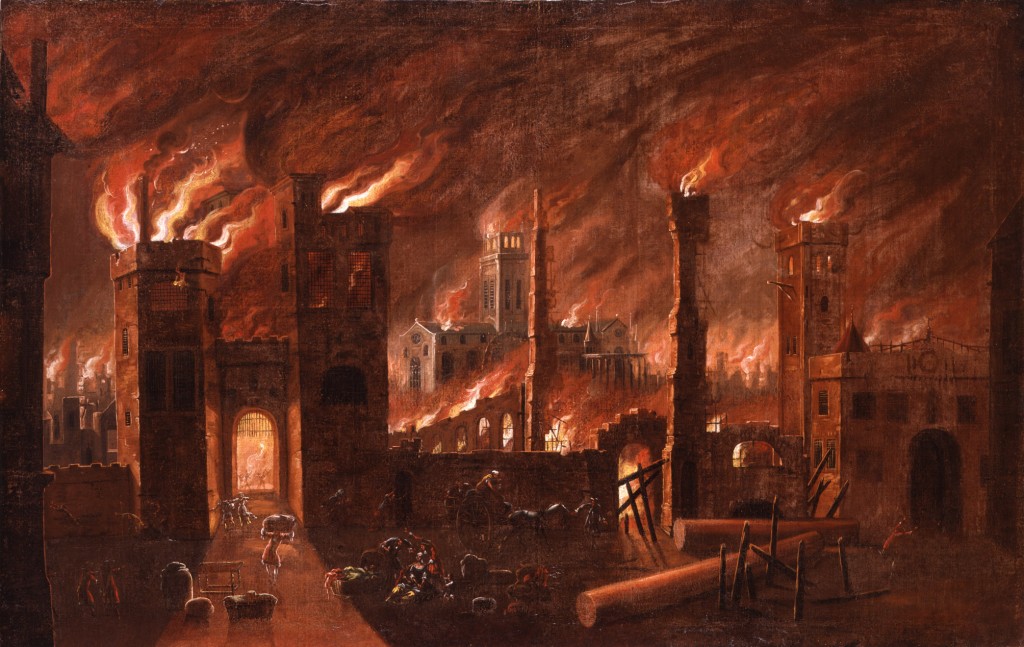
How Did It Happen?
There are so many factors that caused the fire to become so disastrous. It started around 1-2am when most people were asleep and would never have had the opportunity to grow so quickly during the day. It had been a hot summer and there was a drought at the time so the wooden houses were more susceptible. And there was a strong storm wind which helped the fire to spread.
The fire started on 2 September 1666 in Thomas Farriner’s bakery on Pudding Lane. As always, he had raked up the coals in the bakehouse hearth and gone up to bed. But his manservant woke to find the ground floor bakery filled with smoke and he woke Thomas and his daughter Hanna who escaped from an upstairs window into a neighbour’s home. But the first victim of the fire with the maid who was too scared of heights to climb out.
As no post was available (the post office was burned down) and no newspapers (the offices were burned down) it was hard to get word out about the fire and it was able to keep burning for 4-5 days.
After the fire was stopped the king set up a national fundraising scheme and around £16,000 was collected. Londoners could then petition for a share of the fund to support themselves.
Lots of grand plans were considered on how to rebuild the City but in the end cost and speed won out and, by early 1667, individuals were permitted to rebuild their our own houses on the same plots as their destroyed homes.
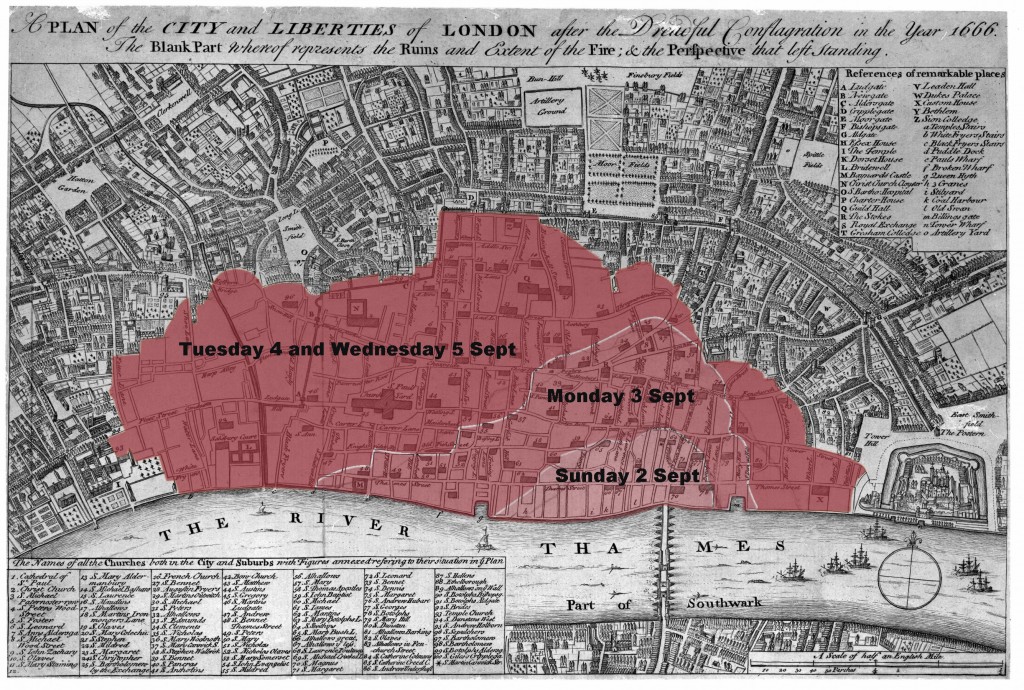
The Great Fire of London in Numbers
80% of the City of London was burned down
13,000 houses were destroyed
80,000 people were made homeless
It took 50 years to rebuild the City
The death toll was low and usually reported as just 6 deaths
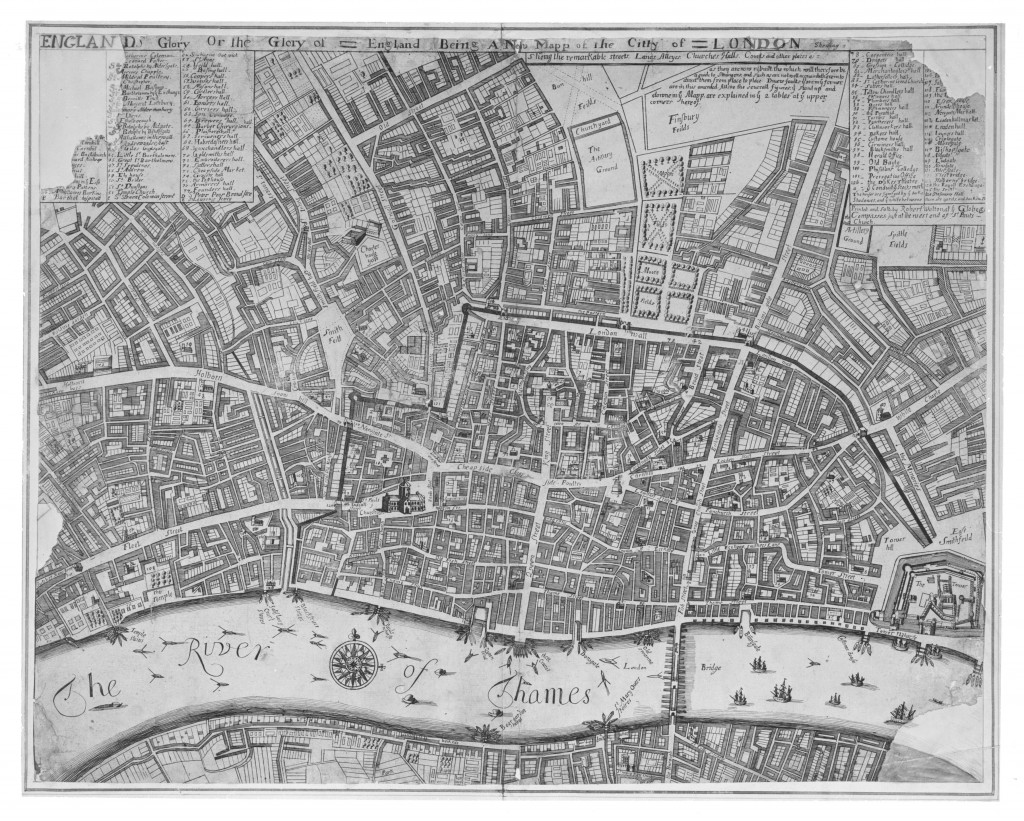
The Exhibition
Fire! Fire! is designed to be one of the Museum of London’s most immersive and interactive exhibitions to date. Visitors will walk down a recreated Pudding Lane and into the bakery to see the fire start. They then walk into an ‘oven’ to watch the fire spread.
Against a 10 metre long backdrop in the room showing London on fire, we will be able to see a variety of incredibly fragile flame-scarred archaeological artefacts that reveal the destructive power of the inferno.
A ceramic roof tile which should be flat and terracotta in colour has blackened, melted and bent in half. The damage shows that temperatures must have been over 1500C. The tile was found in excavations of a house on Botolph Lane that had been destroyed by the fire.
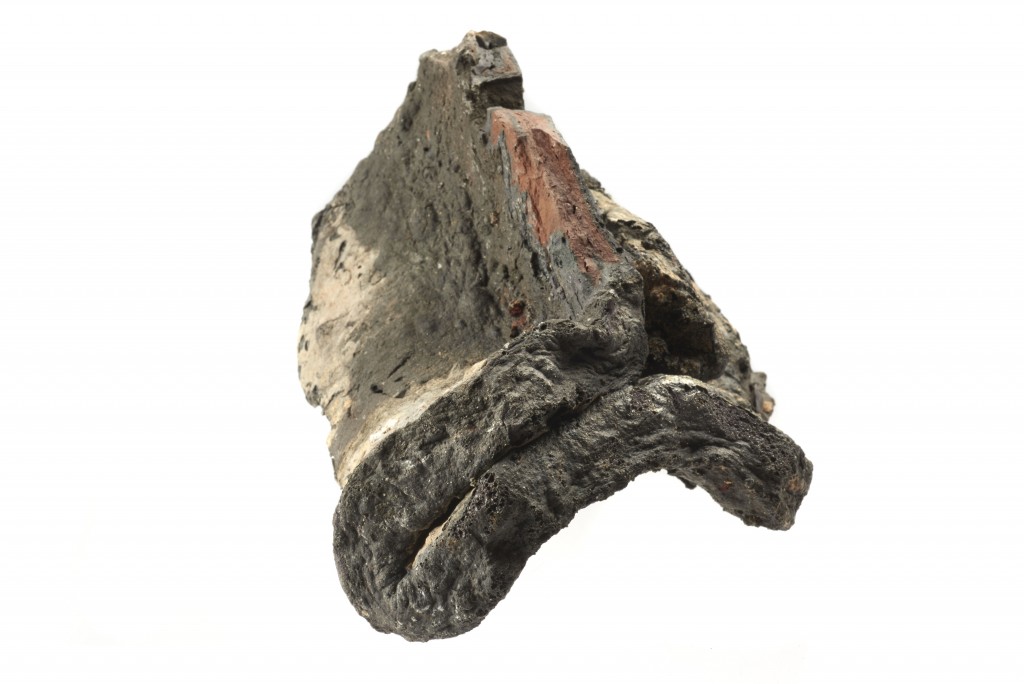
And burnt padlocks and keys made from iron, found at Monument House excavations on Botolph Lane, near Pudding Lane, show the effects of the intense heat.
![2 iron padlocks and 1 key melted together in a lump during the Great Fire of 1666. museum of London id BPL95[119] This image may be used free of charge for the purpose of promoting or reviewing the Museum of London exhibition ‘Fire! Fire!’ 2016-2017. All other uses must be cleared with the Museum of London picture library.](https://aboutlondonlaura.com/wp-content/uploads/2016/03/Burnt-padlocks-and-key-from-Botolph-Lane-c-Museum-of-London-e1457707434126-1020x1024.jpg)
The Museum of London’s mission is to tell the story of the world’s greatest city and its people so it’s significant that they do have personal stories included in this exhibition.
A letter written by “sorrowful” James Hicks on 4 September 1666 informs postmasters of the “great loss and sufferings” from the fire. James Hicks worked at the post office in the City which burnt down shortly after 1am on 3 September. He and his family escaped to Barnet, taking as many letters as they could.
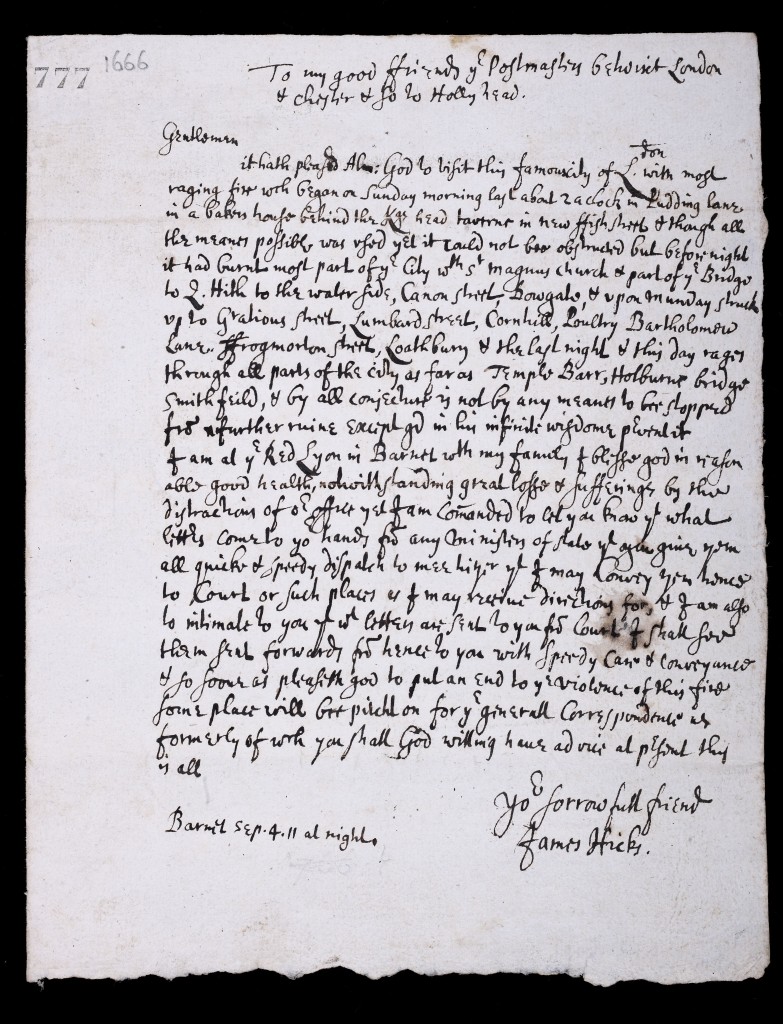
A letter written by Robert Flatman on 9 September 1666 to his brother Thomas, a barrister who worked in the City but was out of town for the fire states “your Chamber in the Temple is down, but your books are safe”, suggesting that he saved these items before Thomas’ rooms at the Temple were destroyed.

There will hopefully be some loan materials from the St Paul’s Collection and other sources too.
Meriel Jeater, Great Fire of London exhibition curator, said: “As one of London’s most famous historical disasters, people often assume that there is nothing new to discover about the Great Fire of London. In fact, there are still numerous unconfirmed hypotheses about how and why the fire started, as well as a number of myths that have built up over the years. We seek to shed new light on the events of September 1666 with our rich collections never-before-seen 17th century archaeological artefacts.”
![Fused lump of hooks and eyes Museum of London id PEN79[337]b This image may be used free of charge for the purpose of promoting or reviewing the Museum of London exhibition ‘Fire! Fire!’ 2016-2017. All other uses must be cleared with the Museum of London picture library.](https://aboutlondonlaura.com/wp-content/uploads/2016/03/Melted-iron-hooks-and-eyes-from-Peninsula-House-c-Museum-of-London-e1457707390286-997x1024.jpg)
Myth
Many are taught that the Great Fire of London ended the 1665 plague. Sadly, this is simply not true as the plague was more prevalent outside of the City of London.
![Sherd from a tin-glazed earthenware plate with floral decoration, glazed bubbled and damaged, probably during the Great Fire of London. Museum id PEN79[337] This image may be used free of charge for the purpose of promoting or reviewing the Museum of London exhibition ‘Fire! Fire!’ 2016-2017. All other uses must be cleared with the Museum of London picture library.](https://aboutlondonlaura.com/wp-content/uploads/2016/03/Burnt-plate-fragment-from-Pudding-Lane-c-Museum-of-London-e1457707472867-1024x441.jpg)
Events
There are some excellent events planned to accompany the exhibition. I’m most tempted by the Fire! Fire! Sleepover on 6 August and 3 December, the Tour the Thames: River and Fire tour on 30 July and 10 December, and the Great Fire Anniversary Weekend on 3 and 4 September.
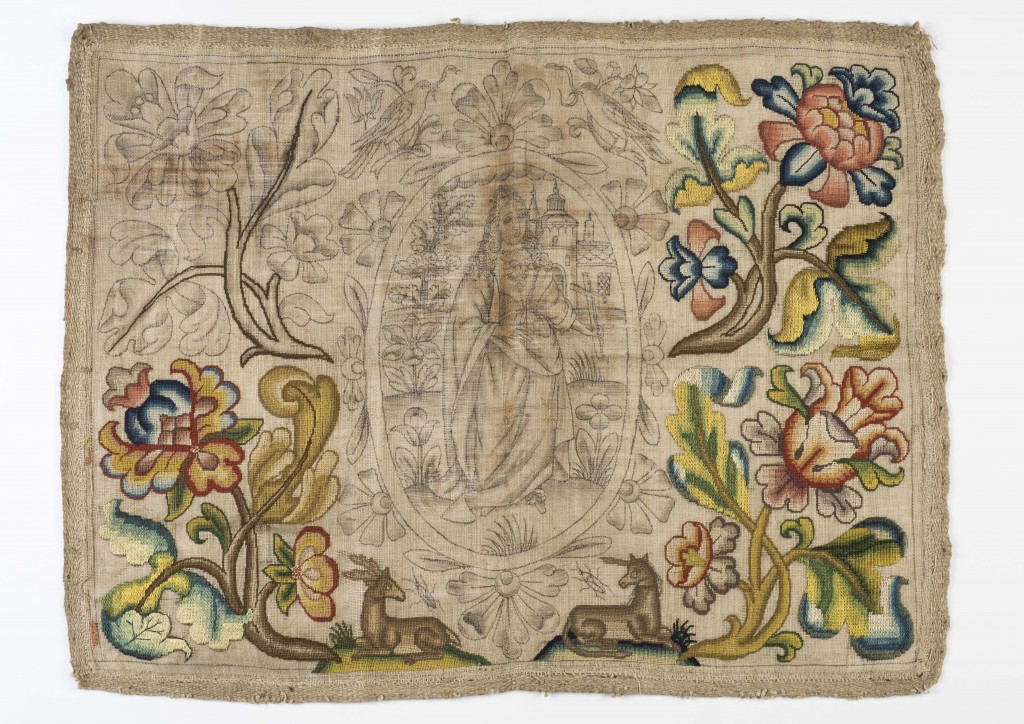
Fire! Fire!
Fire! Fire! is part of Great Fire 350, a programme of events and activities in partnership with the City of London Corporation, Barbican, Artichoke and others to mark the 350th anniversary of the Great Fire of London.
Dates: 23 July 2016 – 17 April 2017
Tickets: From £8 for adults and £5 for children
Official Website: www.museumoflondon.org.uk/greatfire
The latest Step Outside Guide book includes a visit to the Museum of London, See my review of London’s Splendid Square Mile.